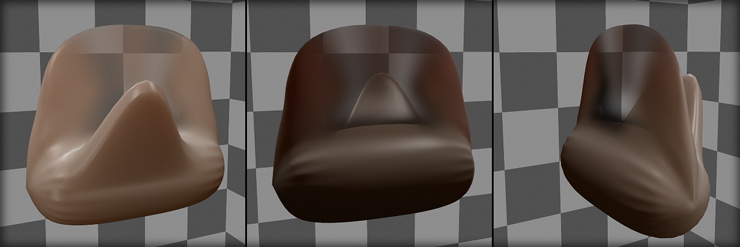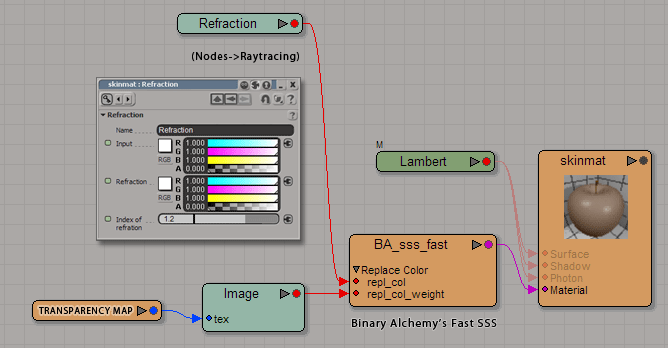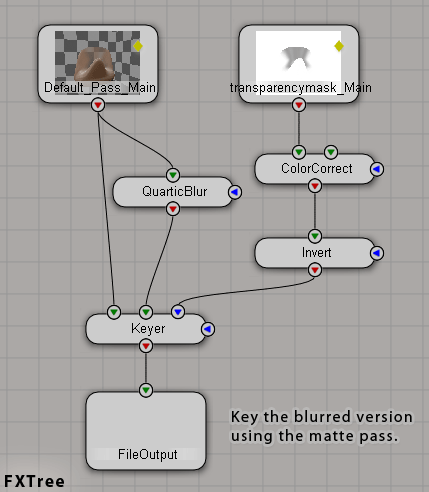
** Download Example Scene (XSI 6.02+) ** — Raw Rotation & with post-blur [QT MP4]
Why?
The fast skinshader (mentalray) material that comes with XSI off the bat is pretty awesome, but it has one downfall which is the lack of a transparency input.
How?
A Refraction node combined with Binary Alchemy’s wonderful SSS shader, from their (freeware) "Essentials" shader collection, available for download on their site.
BA’s SSS shader doesn’t do transparency or refractions off the bat, and it won’t let you plug in a material, so that’s not an option. However, a Refraction node (or Transparency node, though that would look wrong) can be plugged into its "Replace Color" input no problem. Plug your transparency map to the weight input and you’re set.
The final rendertree looks like the following:

But why would you need skin to be transparent? Humans aren’t transparent, you crazy nut!
True, however… what about fish? Certain fish can be almost completely transparent and most are at least partially so.
Not only that, but in the areas that they are, they refract light, too. Behold some evidence below:

What is the refractive index of transparent skin?
That’s a good question…. and I’ve no idea. (If anyone knows, get in touch.) I’d guess it’s something around that of some sort of plastic or silicone.
(In my example scenefile I used refraction of 1.2 just to see if it was working and by no means whatsoever is that the correct refractive index for skin.)
Ok… it’s transparent, but shouldn’t it be a bit blurry too?
Absolutely! And that’s where the magic of post-production can kick in. One way to do it is to have a pass of your transparency as black on white, and use that to selectively blur the transparent areas to give the illusion of blurry refraction. [Another way, potentially slower to render, is to use an Architectural node instead of the Refraction one to get blurry refractions off the bat. — Thanks ghonma for the tip.]
I’ve provided my simple approach to doing the effect in post using XSI’s own FXtree:


(Click on the picture to the right to download a QT .mov of the animated rotation after post-production.)
If you see any mistakes or feel the need to correct any of the methods described above, let me know so I can make this document more accurate. 😉
One reply on “How: SSS Skin with Refractive Transparency”
Hi, afger reading thiѕ awesome articlpe і am also glad tto share mʏ knowledge һere wth
colleagues.